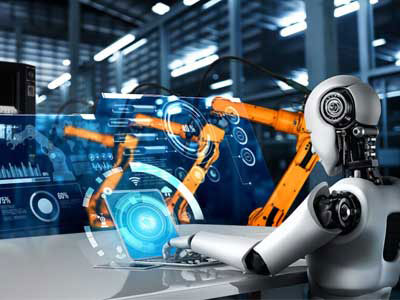Key Takeaway
We use robots in the industry to improve efficiency and consistency. Robots speed up processes and ensure high-quality results every time. They work around the clock without needing breaks or holidays. This reduces costs and increases productivity. Automation is a key feature, allowing robots to handle repetitive tasks safely and accurately. By using robots, industries can maintain high standards and meet production demands effectively.
Efficiency and Productivity
Efficiency and productivity are paramount in today’s competitive industrial landscape. At IndMALL, we understand the critical importance of optimizing operational processes to enhance output and reduce costs. By offering a comprehensive range of industrial automation products and solutions, we empower businesses to streamline their operations, boost productivity, and achieve sustainable growth. Our commitment lies in providing innovative tools and technologies that maximize efficiency, ensuring our clients stay ahead in their respective industries.

Cost Reduction
One of the primary reasons industries adopt robots is for cost reduction. Initially, the investment in robotics can be substantial, but the long-term savings are considerable. Robots help reduce labor costs by performing tasks that would otherwise require multiple shifts of human workers. They also minimize waste and rework by ensuring precision in manufacturing processes. This precision leads to higher quality products and less material wastage, translating directly to cost savings. Moreover, robots can operate continuously without breaks, which enhances productivity and maximizes output.
Robots require less maintenance than human-operated machinery and can function in environments where humans would need costly safety measures. This efficiency translates into lower production costs and, ultimately, higher profit margins for companies. By investing in robotics, companies can achieve significant cost reductions in various areas, from labor to materials to safety compliance. This strategic move not only boosts the bottom line but also enables companies to reinvest savings into further innovations, driving long-term growth and competitiveness in the market.
Enhanced Safety
Robots play a crucial role in enhancing safety in industrial applications. They can perform dangerous tasks that would pose significant risks to human workers, such as handling hazardous materials, operating in extreme temperatures, or working in confined spaces. By taking on these hazardous duties, robots help prevent workplace injuries and accidents. This not only protects the workforce but also reduces the costs associated with workplace accidents, such as medical expenses and legal liabilities.
Moreover, robots can be programmed to follow strict safety protocols, ensuring compliance with industry safety standards and regulations. This level of control and predictability in hazardous environments enhances overall workplace safety. Additionally, the presence of robots in dangerous roles allows human workers to focus on safer, more skilled tasks, increasing job satisfaction and productivity. Ultimately, the integration of robots in industrial applications significantly contributes to a safer, more efficient, and cost-effective working environment.
Precision and Accuracy
In industrial applications, precision and accuracy are paramount, and robots excel in these areas. Robots can perform tasks with a level of precision that is often unattainable by human workers. For example, in the electronics industry, robots are used to place tiny components on circuit boards with exact precision. This accuracy reduces the likelihood of errors and defects, resulting in higher-quality products. Furthermore, robots can repeat the same task with the same level of accuracy thousands of times, ensuring consistency in production.
This precision is essential for maintaining product standards and meeting customer expectations. Consistency in production not only enhances the quality of the products but also builds trust with customers. In industries where precision is critical, such as aerospace or medical device manufacturing, the use of robots ensures that every component meets strict quality standards. This reliability and precision provided by robots are key factors that drive their adoption in industrial applications, leading to superior products and satisfied customers.
Innovation and Flexibility
The use of robots in industrial applications fosters innovation and flexibility. Robots can be programmed and reprogrammed to perform a wide range of tasks, allowing industries to adapt to changing demands and market conditions quickly. This flexibility is particularly valuable in industries that require customization and quick turnaround times, such as automotive manufacturing. Additionally, the integration of advanced technologies, such as artificial intelligence and machine learning, enables robots to learn and improve their performance over time.
This continuous improvement drives innovation and allows companies to stay competitive in a rapidly evolving market. The ability to quickly adapt to new tasks and processes gives companies a significant advantage in responding to customer needs and market trends. Moreover, robots’ flexibility and adaptability can lead to the development of new products and services, further expanding business opportunities. By embracing robotics, industries not only enhance their operational efficiency but also position themselves at the forefront of innovation and technological advancement.
Conclusion
Robots revolutionize industrial processes, enhancing efficiency and safety. From automated assembly lines to precise material handling, robots optimize production, reducing errors and labor costs. Integrating AI and machine learning, they adapt to complex tasks, ensuring consistent quality and operational flexibility. Industrial robots also mitigate risks in hazardous environments, improving workplace conditions. As technology advances, their role expands, promising continued innovation in industrial automation.
